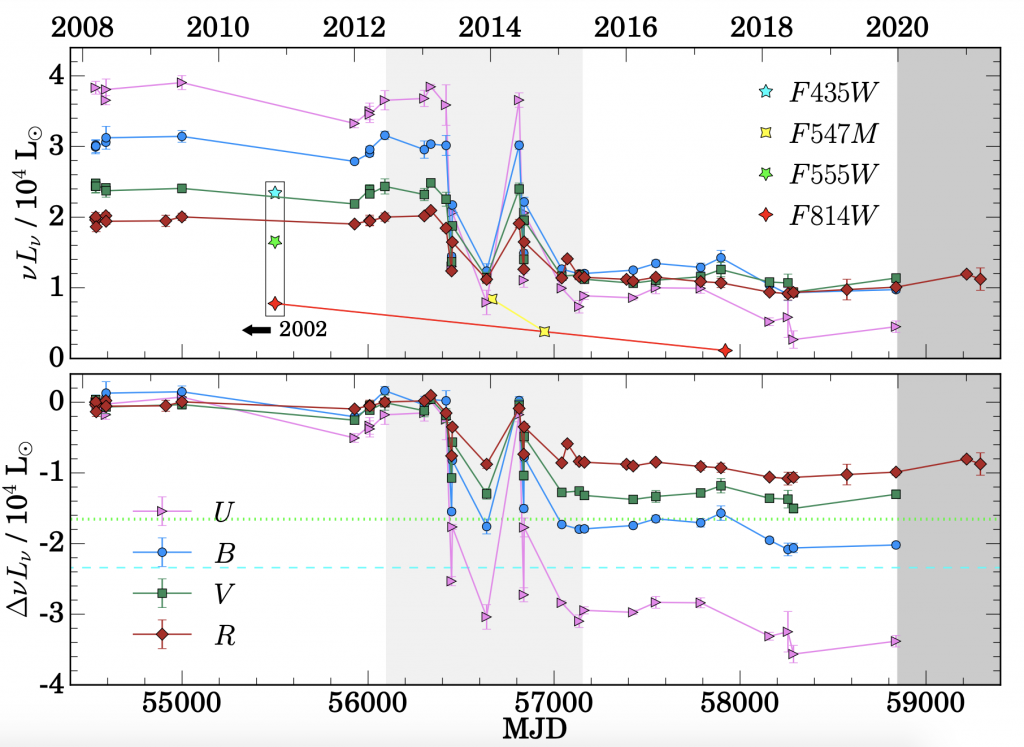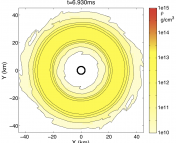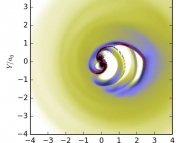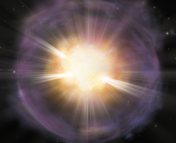Title: The search for failed supernovae with the Large Binocular Telescope: a new candidate and the failed SN fraction with 11 yr of data
Authors: J. M. M. Neustadt, C. S. Kochanek, K. Z. Stanek, C. Basinger, T. Jayasinghe, C. T. Garling, S. M. Adams, J. Gerke
First author’s institution: Department of Astronomy, The Ohio State University
Journal: Submitted to MNRAS. Open access on ArXiv.
Disclaimer: The author would first like to publicly state that Black lives and Black Trans lives matter. Secondly, the author condemns all police brutality against people of color. Lastly, the author recognizes that the writing of this article was performed on the stolen land of indigenous people.
Not Even a Whimper
While most stars are permanently “on,” some stars just disappear out of nowhere! This is both an observational enigma and a proposed solution to the infamous “Red Supergiant Problem.” The crutch of this “problem” is that we have identified red supergiant (RSG) stars responsible for supernovae that are all 12-18 times the mass of our sun despite the maximum mass of these stars being ~25 solar masses…So what happens to the largest RSGs if they are not exploding as brilliant supernovae?
A possible explanation for these “missing RSGs” is that the most massive RSGs violently collapse in a “failed supernova” event that emits very little light and immediately forms a black hole. After this theoretical explanation was proposed, astronomers began searching nearby galaxies for massive stars that disappeared as failed supernovae. This type of survey, a search for nothing, is the highlight of today’s paper, which combines 11 years worth of data in order to identify potential failed supernova candidates.
Needle in a Haystack
To search for disappearing stars, the authors used the Large Binocular Telescope (LBT), which imaged ~27 nearby galaxies for the past 11 years. The authors then combed through the data of millions (!) of the most luminous, massive stars in these galaxies to understand their stellar behavior over the 11 year time window. The authors looked for significant changes in the luminosity of these stars (shown in Figure 1), which could indicate that they had just promptly collapsed to form a black hole in a failed supernova event. And within this immense amount of data, how many failed supernova candidates did they find? Only 3!

However, even though they only found three candidates, the author’s astronomical “survey about nothing” re-confirmed the most famous failed supernova candidate N6946-BH1 which is thought to have been the result of a 25 solar mass RSG that violently collapsed, releasing only a small amount of light from possible fallback accretion onto the newly formed black hole. In addition to N6946-BH1, the authors present two new candidate failed supernovae. The first candidate, named N4736-OC1, faded significantly during the LBT observation window but just recently re-brightened again, leading the authors to conclude that this is likely some variable star and not a failed supernova. However, the second candidate, M101-OC1, is much more promising!

As shown in Figures 1 and 2, the star responsible for M101-OC1 dramatically decreased in luminosity at MJD ~56400 (which corresponds to the year 2013) and the remaining source has remained faint for several years now, suggesting that the initial star collapsed as a failed supernova. The authors postulate that the remaining light from the now faint source could be accretion onto the newly formed black hole or a smaller binary companion star to the massive star that collapsed. However, there are still a few peculiar properties of this candidate that the authors discuss. For example, the original star is much bluer (hotter) and possibly smaller (~12-15 solar masses) than the massive RSGs that we expect to produce failed supernovae like N6946-BH1. This is puzzling but the true size of the star remains unconstrained due to uncertainties in the modeling. Future observations should help the authors learn more about this intriguing source!
Lastly, the authors propose a rate at which failed supernovae could occur in the universe. They find that ~4-40% of RSGs should form failed supernovae, which fits nicely within the proposed amount (~10-30%) of stars that need to “disappear” to solve the red supergiant problem. Longer term monitoring of RSGs in nearby galaxies will be essential to help astronomers understand the complex nature of these massive stars in their final years of stellar evolution.
Edited by: Alice Curtin
Featured Image Credit: chandra.harvard.edu




